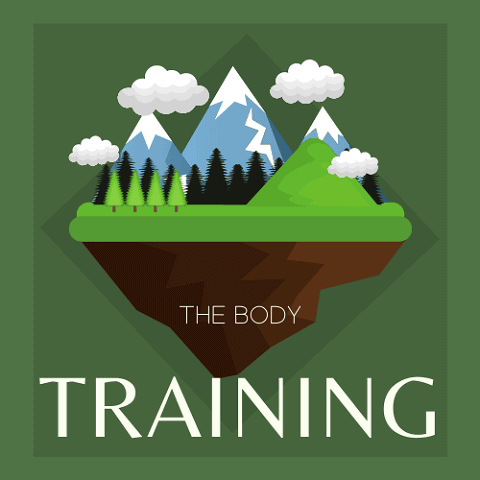Fact checked by Steven Lines, lifelong Hunter and Outdoorsman .
.
Archers are very familiar with how far they can shoot an arrow, given the poundage of their bow and their arrow’s weight. On a calm day, this distance should remain relatively constant for an experienced shooter as they have perfected their draw and release on the bow.
But what if you aimed the bow straight into the sky instead of firing the arrow in a forward direction. How high could you shoot an arrow?
Well, the answer depends on the bow’s draw weight; this will determine how much energy is transferred to the arrow. It will also depend on the weight of the arrow as a lighter arrow will travel farther, given the same force, than a heavier arrow.
We could generalize that a 50lb bow could fire a standard arrow about 369 meters (403 yards) straight up under ideal conditions and in a vacuum—with no atmosphere. Keep reading to see how we worked out that height.
WARNING: You should never fire an arrow into the air. In most places, this is illegal, and it is incredibly hazardous to you and anyone that is even remotely close by.
Because there have not been extensive tests on firing arrows straight up, for several reasons, including safety, we need to use some physics to figure out how high you could shoot an arrow.
To do that, we will borrow some calculations from Steven Holzner, Ph.D. , who was on the faculty of both MIT and Cornell University and has written several books on physics.
, who was on the faculty of both MIT and Cornell University and has written several books on physics.
In this post, we'll cover:
The Physics of Firing and Arrow Straight Up
I have put some formulas used to calculate the height limit, but you don’t need to understand the physics behind them to follow this explanation.
So, let’s take a look at how we figured out the ceiling height of an arrows flight when fired straight up using a 50lb pound bow:
A 70-pound compound bow can shoot an arrow about 100m/s, which is about 330 fps.
First, we need to know about kinetic energy and potential energy. In physics, potential energy is any energy an object has because of its position relative to others, stress within itself, or other factors.
Kinetic energy is an object’s energy when it is in motion.
Potential energy is what you are building when you pull back on the bowstring. It comes from the stress in the bowstring and the limbs of the bow.
When you release that bowstring, you transfer energy into the arrow. That transfer from bowstring to arrow gives the projectile its kinetic energy.
Also necessary is velocity; this is simply the speed of an object traveling in a given direction.
Firing a 50-Pound Bow Straight Up
So, for our calculation, we need to know the kinetic energy that the arrow will have. Because kinetic energy is equal to the square of the velocity, we can work from that 70-pound compound bow velocity above.
The equation for that would look like this: 70 / (1002)
In the equation above: 70 is the bow’s draw weight, and 100 is the arrow’s velocity in meters per second.
Now, if we plug in what we have for our 50lb bow we get: 70 / (1002) = 50 / (x2)
Next, we need to solve for x, which gives us a velocity of 85m/s.
Finally, if we use Dr. Steven Holzner’s equation from the article above about firing a cannonball straight up, we can see how far the arrow will travel before it reaches an upward velocity of 0 and starts to fall back to the earth.
The equation we are going to use is: d = v2/(2*9.8 m/s2)
d is the distance we are solving for, and v is where we will plug in our 85m/s. The last half, in brackets, accounts for the force of gravity pulling down on the arrow.
Working this out gives us a distance of 369m or 403 yards.
Firing a 65-Pound Bow Straight Up
Following the same procedure above, plugging 65 into our first formula will get us an initial velocity of 96m/s.
If we put that velocity into our second equation, we get a theoretical ceiling height of 470m or 514 yards.
Remember, this is calculated based on an arrow fired straight up in a vacuum.
That means there is no air resistance included. It also does not account for the layers of the atmosphere. As you travel upwards in the atmosphere, the conditions change.
The temperature will fluctuate, as will the humidity and the speed and direction of the wind. All of these will reduce the actual height an arrow would reach.
Also of note is that no human could fire a perfect shot straight up. There will always be some deviation from straight, which will also affect the actual height reached.
What Happens Next?
So, the arrow has hit its maximum height and will now fall back to earth. That’s a dangerous projectile design to penetrate objects which are now falling back to the ground on an unpredictable trajectory. What would its speed be, and would it be enough to injure someone critically?
Again, this is not well tested, although specific myth-busting individuals have run some tests. This question is best figured out using physics formulas rather than testing because of the danger factor.
Rhett Allain, an associate professor of physics at Southeastern Louisiana University, wrote a piece for Wired magazine where he does the math on this problem. Include in the article are some fantastic programs you can play with to figure out this problem given different variables like arrow weight and initial velocity.
for Wired magazine where he does the math on this problem. Include in the article are some fantastic programs you can play with to figure out this problem given different variables like arrow weight and initial velocity.
Using an initial velocity of 60m/s (considerably slower than our 85m/s and 96m/s for our 50 and 60lb bows, respectively), he found that the arrow would be traveling at ~60m/s when it hit the earth.
So, is that enough to kill someone? Yes, depending on where the person was hit, it would be enough to kill them. No matter where they were struck, it would be enough to cause serious injury.
What about the speeds for our two cases above? Well, they would be ~62.5m/s and ~66m/s. Thus, they, too, would be going fast enough to kill or seriously injure someone when they hit the ground.
Now you can see why it is incredibly unsafe to fire arrows into the air.
Summary
The physics behind how high you could fire an arrow contains too many variables to be calculated with certainty. The draw weight of the bow, as well as atmospheric conditions, will all alter the actual height an arrow reaches.
However, we can work out the maximum altitude such a projectile could travel given the bow’s draw weight and some reasonably straightforward physics equations.
A more critical question is: what happens once it hits that height? Of course, it starts to fall back to the ground. The force with which it eventually hits the ground is enough that, should it hit a person instead of the earth, there could be grave consequences.
Don’t try this at home, folks. You can get in serious trouble, and even more importantly, you could injure yourself or someone else.
The concepts used here are pulled from a branch of mechanics known as kinematics. Kinematics looks at the motion of objects, which is highly applicable to the physics of archery.
If you would like to learn more about it, check out this video from Rhett Alain.

Steven Lines is a hunter and outdoorsman from Safford, Arizona, USA. Since he was a child, he has been hunting and fishing and has over 20 years of outdoor experience. Steven works as a hunting guide in Arizona during his spare time and runs a Youtube channel dedicated to sharing his outdoor adventures with others.
dedicated to sharing his outdoor adventures with others.

